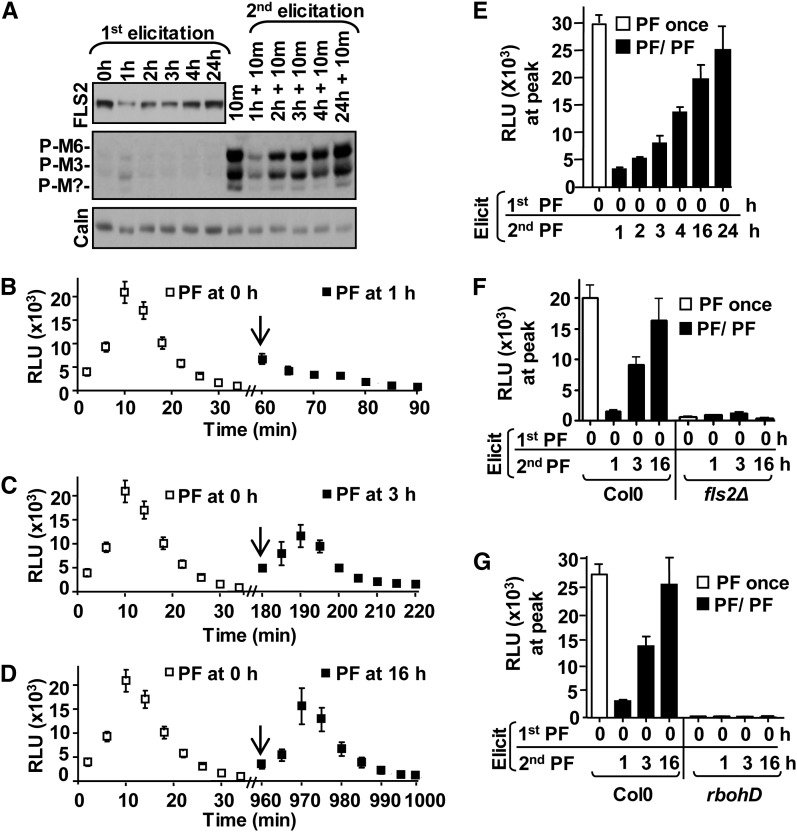Figure 8.
FLS2 protein replenishment leads to resensitization to flg22 that is FLS2 and RbohD dependent. A, After initial ligand-induced degradation of FLS2, subsequent increased new FLS2 protein levels positively correlated with flg22-induced MAPK phosphorylation. After a first flg22 elicitation at 0 min for 45 to 50 min, Col-0 leaf strips were washed and incubated in the absence of flg22 until indicated times. For reelicitation, samples were reelicited with flg22 at indicated hours for 10 min. Immunoblot analysis of total protein extracts was done as in Figure 4. B to D, Resensitization of flg22-induced ROS production. All Col-0 leaf disc halves were elicited with flg22 at 0 h for 45 min (n = 60 per treatment). After a wash step, subsets of leaf disc halves (n = 20 per treatment) were reelicited at 1 (B), 3 (C), or 16 h (D). Arrows indicate times of second elicitation with flg22. ROS experiments shown in B, C, and D were set-up in the same 96-well plate to allow for direct comparison. E, Bar graph representation showing ROS peak (10–12 min) after first elicitation and second reelicitation with active flg22 at indicated hours (n = 10 per treatment). F, ROS resensitization is FLS2 dependent. G, ROS resensitization is RbohD dependent. For F and G, wild-type (Col-0), fls2, or rbohD leaf tissue was treated as in B to D at indicated times. For E to G, white bars represent ROS peak production 10 to 12 min after the first elicitation at 0 min (PF once), and black bars represent ROS peak production 10 to 12 min after reelicitation of tissue subsets for a second time at indicated times (PF/PF). ROS experiments shown in the same panel were set-up in the same 96-well plate. All experiments were elicited with 0.1 μm flg22 and done at least three times with similar results. Values are mean ± se. RLU, relative light unit; P-M?, phosphorylated unknown MPK; Caln, calnexin.

